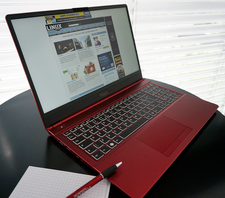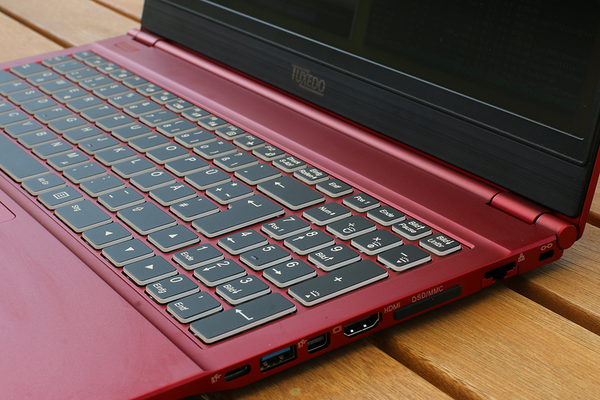Tuxedo InfinityBook Pro 15 v4
Lean Machine

A Linux-friendly alternative to Dell and Apple, the Tuxedo InfinityBook Pro 15 v4 offers a bigger screen at an affordable price, all without sacrificing portability.
Business notebooks come in different designs for different applications. Lenovo is known for its rugged but not very elegant ThinkPads, Dell for its slim and stylish XPS models, and Apple for its MacBooks. The InfinityBook series by Linux specialist Tuxedo is known for its “chic and lean” design. The latest generation of Tuxedo’s lean machine is the InfinityBook Pro 15.
To test out Tuxedo's lean machine, we put the InfinityBook Pro 15 v4 Red Edition through its paces.
 Figure 1: USB, HDMI, DisplayPort, and Ethernet: Despite its compact dimensions, the InfinityBook Pro 15 v4 has the most important interfaces on board.
Figure 1: USB, HDMI, DisplayPort, and Ethernet: Despite its compact dimensions, the InfinityBook Pro 15 v4 has the most important interfaces on board.
[...]
Buy Linux Magazine
Subscribe to our Linux Newsletters
Find Linux and Open Source Jobs
Subscribe to our ADMIN Newsletters
Support Our Work
Linux Magazine content is made possible with support from readers like you. Please consider contributing when you’ve found an article to be beneficial.

News
-
Linux Mint 22.3 Now Available with New Tools
Linux Mint 22.3 has been released with a pair of new tools for system admins and some pretty cool new features.
-
New Linux Malware Targets Cloud-Based Linux Installations
VoidLink, a new Linux malware, should be of real concern because of its stealth and customization.
-
Say Goodbye to Middle-Mouse Paste
Both Gnome and Firefox have proposed getting rid of a long-time favorite Linux feature.
-
Manjaro 26.0 Primary Desktop Environments Default to Wayland
If you want to stick with X.Org, you'll be limited to the desktop environments you can choose.
-
Mozilla Plans to AI-ify Firefox
With a new CEO in control, Mozilla is doubling down on a strategy of trust, all the while leaning into AI.
-
Gnome Says No to AI-Generated Extensions
If you're a developer wanting to create a new Gnome extension, you'd best set aside that AI code generator, because the extension team will have none of that.
-
Parrot OS Switches to KDE Plasma Desktop
Yet another distro is making the move to the KDE Plasma desktop.
-
TUXEDO Announces Gemini 17
TUXEDO Computers has released the fourth generation of its Gemini laptop with plenty of updates.
-
Two New Distros Adopt Enlightenment
MX Moksha and AV Linux 25 join ranks with Bodhi Linux and embrace the Enlightenment desktop.
-
Solus Linux 4.8 Removes Python 2
Solus Linux 4.8 has been released with the latest Linux kernel, updated desktops, and a key removal.

